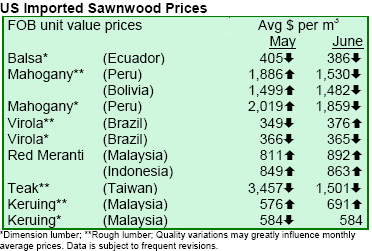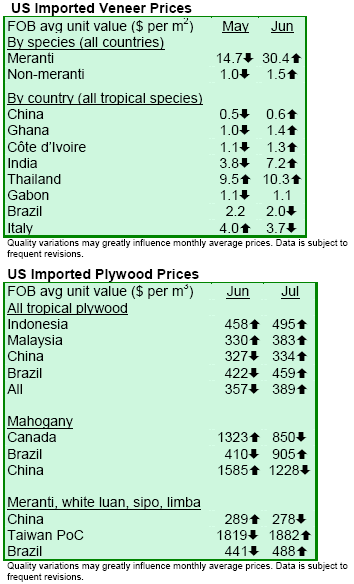|
Housing slowdown ushers widespread price declines
Housing prices, slumping after a five-year boom, are projected to decline in more than 100 metropolitan areas,
with the Northeast, Florida and California among the areas hardest hit, according to Moody's "Housing at the Tipping
Point" report. The US forecasting firm projects the median sale price for existing homes to decline by 3.6% in 2007,
which would be the first annual decline since the Great Depression of the 1930s.
The report projected that 133 out of 379 US metropolitan areas would suffer price declines, which account for nearly
half the value of US stock of single-family homes. The 133 areas are concentrated in California and Florida and
the Northeast corridor from southern Maine to just south of Washington, D.C., as well as boom areas of Nevada and
Arizona and some depressed sections of the Midwest, such as Detroit. Prices are forecast to fall and stay down for at
least a couple of years to work off the excesses of the last decade, according to the report.
The report described the current environment as a "correction" and not a "crash," but it cautioned that there
were downside risks that could make the slowdown more serious. A big threat is that the fall in home prices could
have a significant impact on consumer spending.
No agreement yet on GSP renewal
The US House of Representatives might consider GSP renewal legislation (H.R. 6142) in November 13,
according to IWPA. Bill Thomas (California), Ways and Means Committee Chairman, has been sponsoring the
GSP renewal for two years until 31 December 2008. The
legislation would also preserve GSP for wood imports from Brazil and give the President the authority to grant
Competitive Need Limitation (CNL) waivers, for products such as plywood from Indonesia (HTS 4412.13.40).
In contrast, Senate Finance Committee Chairman, Charles Grassley (Iowa) still stood firm on graduating Brazil and
India from the GSP program and delaying any decision until the release of the US Trade Representative¡¯s review
of Competitive Need Limit (CNL) waivers in November.
The GSP would expire if the House and Senate cannot reach an agreement prior to 31
December. When expiration occurred in the past, GSP renewals had included a retroactivity clause to allow for collected duties
to be returned.
California reviews draft formaldehyde emissions limits
The California Air Resources Board (CARB) has scheduled a public workshop on 23 October in Sacramento
to review the second draft of the proposed Airborne Toxic Control Measure (ATCM) and to discuss the
implementation of the regulation. The second draft was due to be released before the workshop. The ATCM
provides specific formaldehyde emissions limits from composite wood products including hardwood plywood,
particleboard, and MDF that are below currently required levels. The proposed rule also required compliance testing
and third-party certification, and imposed new product labelling and chain of custody requirements for
manufacturers. Importers are specifically identified in the proposed rule-making.
Delayed USA-Canada agreement angers US producers
The Canadian Government announced that the 1 October 2006 implementation of the USA-Canada Softwood
Agreement would be delayed until 1 November 2006. This would create more time to work out technical problems,
especially related to the withdrawal of dozens of legal
cases connected with the US lumber duties. The delay has angered US lumber producers. The Washington-based
Coalition for Fair Lumber Imports blamed Canadian exporters of taking advantage of the delay to flood the US
market with lumber before export taxes kick in under the
agreement. The influential lumber lobby said the US side had done its part to implement the deal but the Canadians
were doing everything possible to stall its implementation. The delay meant that lumber could be shipped to the US
market essentially duty-free because Canadian exporters eventually would get the duties refunded under the
agreement.
US lumber exports to Asia gathering steam
Following the traditional lull during the summer holiday, the international market was again providing good sales
opportunities for most of the popular North American hardwood species and grades. Shipments of US hardwood
lumber for the first half of 2006 amounted to 692.7 million board feet (mbf) , up 4.9% from the same period last year.
In spite of the solid demand, fierce competition in the global marketplace has limited any upward price
movements for US hardwood lumber.
US exports into Asian markets (notably China) have been gathering most steam. Combined shipments to China and
Hong Kong S.A.R. increased by 16.8 % in the period. However, while exports to China mainland have been
growing in recent years, shipments to the S.A.R. were
declining. Buyers in mainland have become accustomed to dealing directly with North American hardwood exporters
and were much less dependent on Hong Kong based middlemen/representatives. Poplar (33.8 mbf, up 110%),
red oak (21 mbf, up 69%), white oak (12.5 mbf, up 35%) were the top hardwood species exported to China.
As a direct consequence of the US import restrictions imposed on Chinese bedroom furniture, US imports of
these products from Vietnam have increased significantly during recent years. By implication, the demand for
hardwood lumber by Vietnamese secondary wood products manufacturers skyrocketed. Vietnam¡¯s imports of
US hardwood lumber amounted to 18.2 mbf, with poplar and white oak accounting for 60% of the imports. Even
though a significant percentage of the wood products manufacturing industry in Vietnam was financed and
managed by Chinese and Taiwanese investment capital, the business culture in Vietnam was different than in
China and US exporters were still in the midst of an acclimatization process.
The European demand for North American hardwood lumber has been growing at a slower pace (3.1%) than the
Asian demand this year. The species preference in the EU was also different: mainly white oak (64.6 mbf, down
5.9% and 41% of the imports) and poplar (26.8 mbf, up
26.4%).
The global outlook for North American hardwoods looks favourable for the remainder of this year. In light of the
slowing US economy, the strengthening of the overseas demand comes as a welcome reprieve.


¡¡
|